Elba Island is the largest island in theTuscan Archipelago as well as the third largest in Italy. It is located about ten kilometers from the coast, and the easiest and quickest way to get there is by ferries that leave from Piombino and in about forty minutes make the crossing of the Piombino channel that separates the island from the coast. TheIsland of Elba is a popular summer destination (although it is worth a visit in all seasons), not only for its beaches, but also for its natural beauty (it is integrally part of the Tuscan Archipelago National Park, established in 1996), and for the variety of landscapes it offers: the western part, in fact, is characterized by the presence of rugged mountains, on which stands Mount Capanne, which with its 1.019 meters above sea level is the highest relief on the island, in the center a plain where gulfs, inlets and fine sandy beaches open up, while the part closest to the coast is hilly and is famous for its iron mines, which were much exploited in ancient times and also give its name to the main town on Elba Island, Portoferraio. There are seven municipalities on the island (from the most to the least populated: Portoferraio, Campo nell’Elba, Capoliveri, Porto Azzurro, Rio, Marciana and Marciana Marina), each with its own history and peculiarities, capable of narrating a multi-millennial history, since, thanks to archaeological findings, we know that the Island of Elba was populated as early as prehistoric times, and particularly during the Paleolithic period. The Etruscans built several fortified villages there, having sensed its strategic role in controlling sea routes and exploiting iron mines. In Roman times the first nucleus of today’s Portoferraio was finally founded, in the Middle Ages the island was conquered by Ostrogoths and Lombards, became the territory of the Republic of Pisa and then the Principality of Piombino. But the history of the Island of Elba is inextricably linked to that of Napoleon, who was in exile here for 10 months between 1814 and 1815: there is still evidence of his passage. Today Elba Island is one of Tuscany’s most popular destinations, and there is so much to see: below are the ten must-see places for your trip.
The island’s main town, the only one to exceed ten thousand inhabitants, Portoferraio is the arrival point for ferries to Elba Island and lies on a large natural harbor. Known in the Middle Ages as “Ferraia,” it was already the site of mining activities in the thirteenth century: the site was then ceded by the Appiani to the Medici in 1547, and the ancient village was refounded on an urban design by Giovanni Camerini, who, for Cosimo I, conceived a modern fortified town that was given the name “Cosmopoli,” or “City of Cosimo,” which became an exclave of the Duchy (later Grand Duchy) of Tuscany in the territory of the Principality of Piombino ruled by the Appiani. Even today, the historic center of Portoferraio has an orderly network of wide streets overlooked by large 16th- and 17th-century buildings dominated by the imposing bulk of Forte Falcone and Forte Stella, the Medici fortresses built to protect the town. In the center of Portoferraio one can admire the Torre del Gallo, or the coastal tower so called because in the 16th century a rooster (symbol of the new dawn of the Medici Cosmopolis) was placed there, traditionally attributed to Giambologna and stolen in the 18th century; the church of the Nativity of Mary with works of the Tuscan 17th century; the neoclassical church of San Cristino to which is attached the Museo della Misericordia (inside is a Madonna and Child by the school of Tino di Camaino), the church of San Marco alle Grotte with an altarpiece by Giuseppe Bezzuoli, and the Pinacoteca Foresiana, which is the city’s main art museum, with a collection of works by important artists, especially of the 19th century (from Telemaco Signorini to Plinio Nomellini, from Llewelyn Lloyd to Antonio Ciseri), divided into twelve rooms.
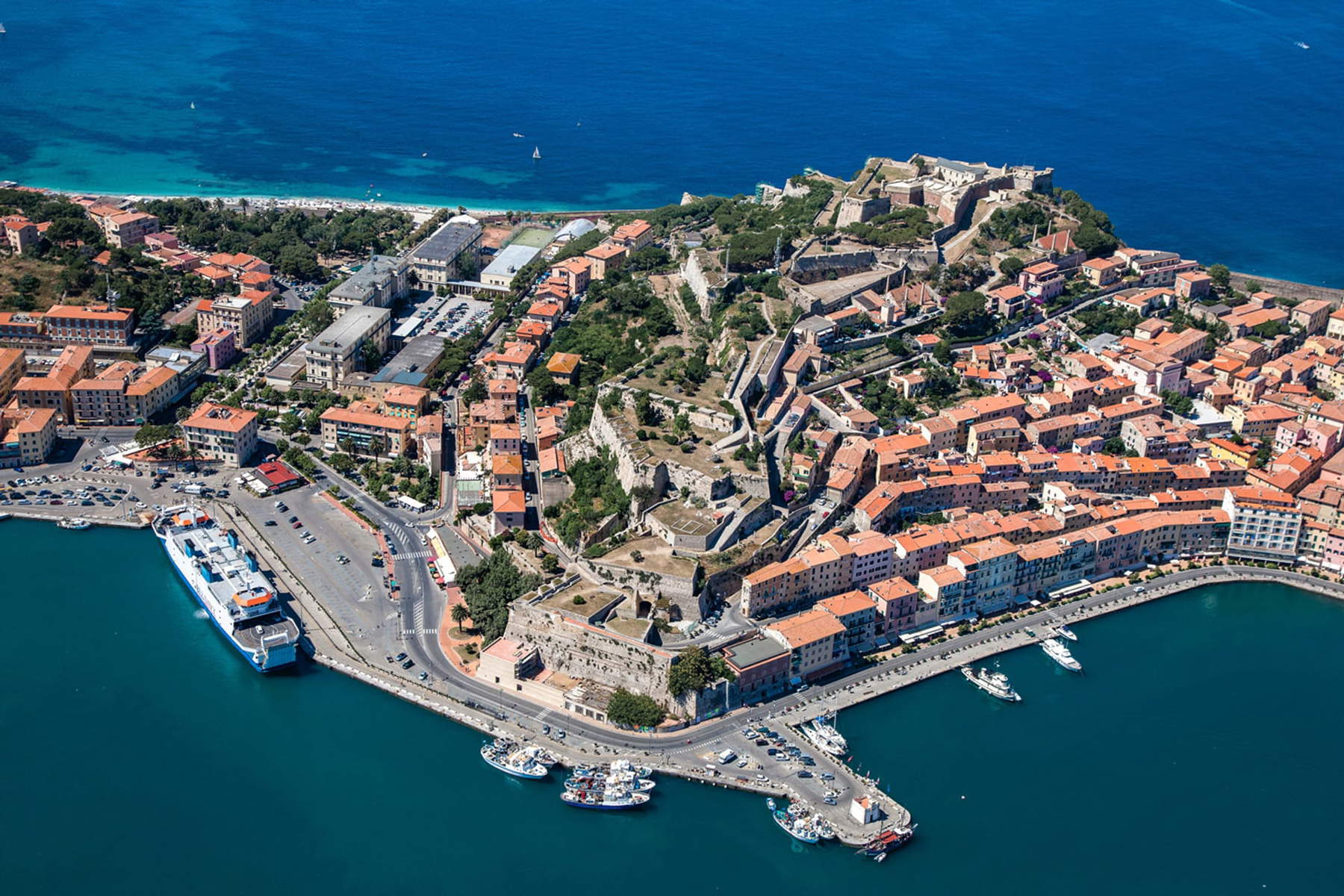
Marciana is the oldest village on the Island of Elba: in all likelihood it is located on the site of an ancient Roman settlement, as the name would suggest (derived from the Roman personal name Marcius), although the municipality of Marciana is first mentioned in a 12th-century document. In the past, Marciana was of some importance since it was the summer residence of the princes Appiano di Piombino, when the island was dominated by the seigniory based in the coastal town. The historic center is developed under the mighty Pisan Fortress built in the 12th century, which served to protect this area of the island from the raids of Saracen pirates, and could also shelter the population when necessary. Important monuments include the ancient 12th-century parish church of San Lorenzo, located in “Il Santo,” halfway between the center of Marciana and the hamlet of Poggio, and then again the church of Santa Caterina, the parish church of Marciana as well as one of the largest churches on the island, the Mint of Marciana (which was founded by the Appiani princes), as well as the characteristic historic center.
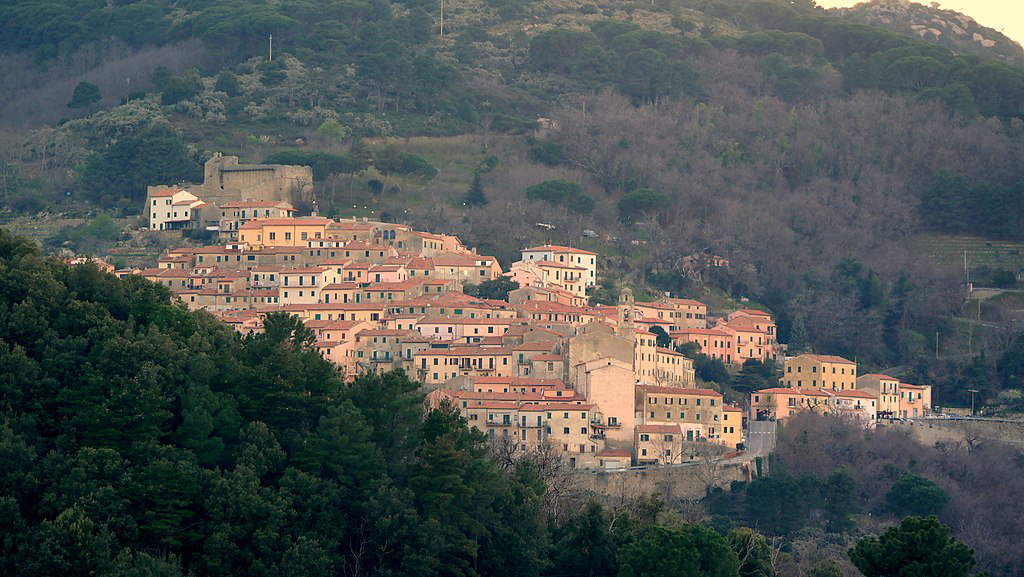
These are the two main archaeological museums on the Island of Elba, like other institutes they are part of the Tuscan Archipelago Museum System, and for lovers of ancient history a visit to these two institutes will be useful to learn all about life on the island in prehistory and antiquity. The most comprehensive is the Archaeological Museum in Marciana, with artifacts ranging from the Paleolithic to the Middle Ages arranged in four rooms: there are Etruscan ceramics, Greek-Italic amphorae, medieval Pisan majolica, as well as amphorae found in the wrecks of ships shipwrecked in the sea around the island. In Portoferraio, on the other hand, visit the Linguella Archaeological Museum, housed in the rooms of the ancient salt warehouses of the Elban capital. Inaugurated in 1985 and finally opened to the public in 1988, it has two rooms with exhibits that mainly tell the story of the island of Elba’s ancient trade thanks to the material found in the shipwrecks, but that’s not all: the precious Altar of Attiano, a granite altar from the second century AD dedicated to Hercules, can also be admired in this museum.
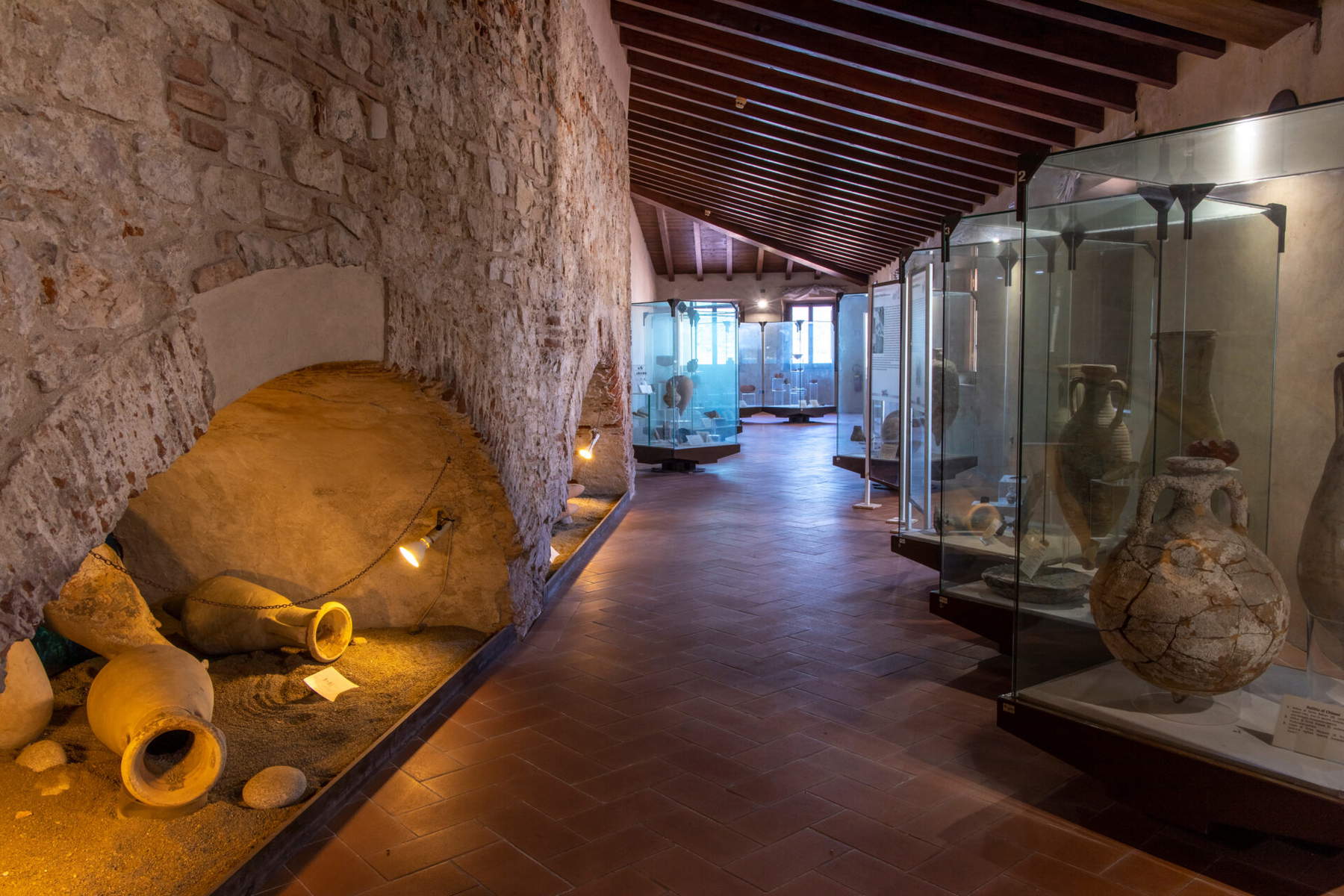
Those who want to learn about the thousand-year history of iron mining on the Island of Elba should not miss a visit to the mining museums. You can start with the MUM - Museo Mineralogico “Luigi Celleri” in San Piero in Campo, opened in 2013: here there is a rich collection of minerals and samples from the island’s mining sites. One section is dedicated to iron ores and the rocks from which the minerals on the island are extracted. In Rio Marina, Palazzo del Burò, on the other hand, houses the Museum of Elba Minerals and Mining Art where, in addition to the collection of minerals, one can observe faithful reconstructions of mine environments with original materials and tools from the mining sites (one can visit, for example, a life-size section of tunnel, the miners’ places, and the blacksmith’s workshop). To learn about iron mining throughout history, one can visit, also in Rio, the Archaeological Museum of the Mining District, which displays archaeological artifacts documenting the most important production activity on the Island of Elba throughout history. Finally, in Capoliveri, you can visit the mines of Mount Calamita, whose production activity was suspended in 1980 (although the deposits are not exhausted) and today are one of the most interesting industrial archaeological sites in Tuscany and beyond.
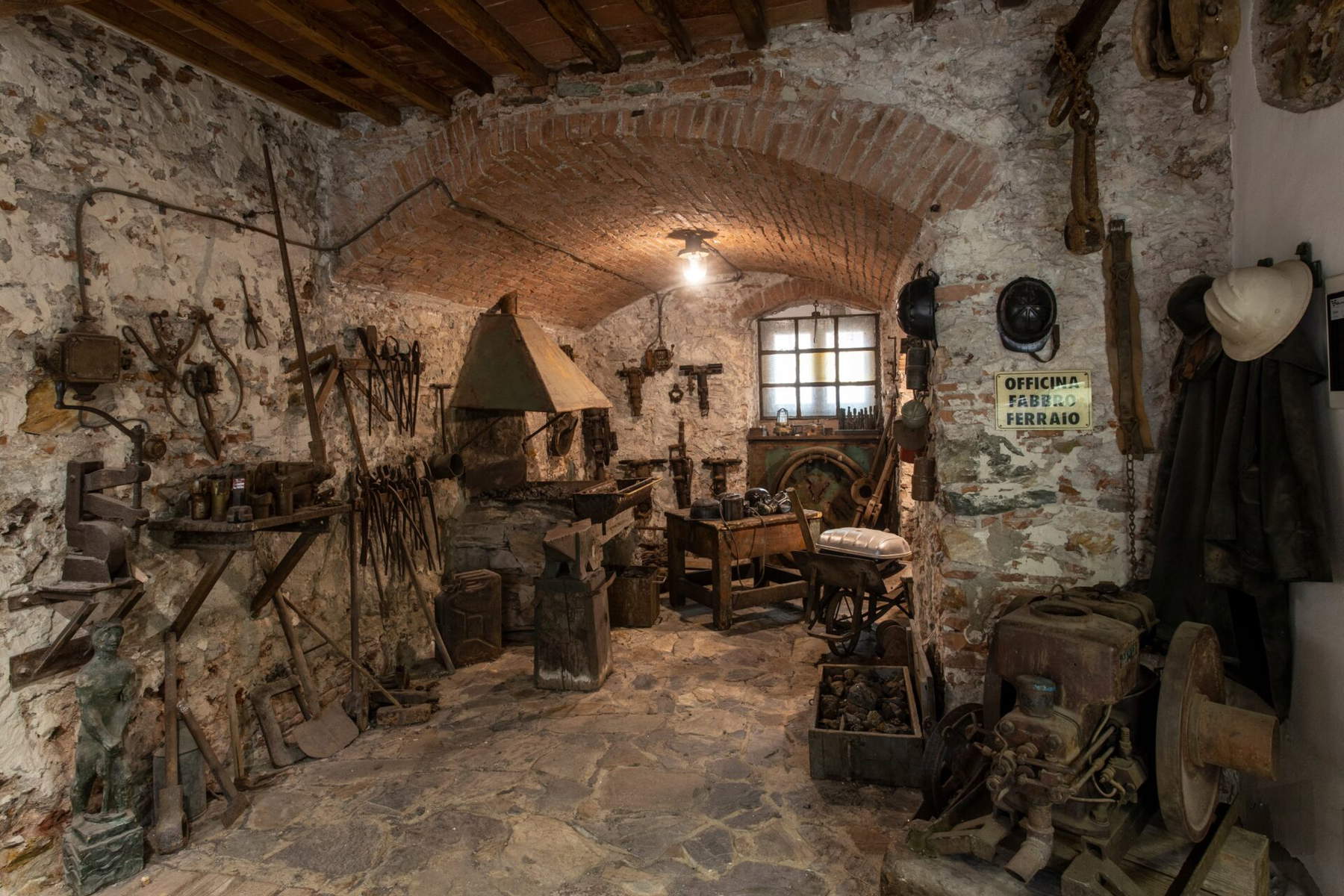
These are the particular sites, typical of the Island of Elba, that were used by shepherds who brought their flocks of goats, a very common animal in this land, to graze on the slopes of the western part of the island. They consisted of three elements: the caprile proper, that is, the stone enclosure that bordered the goat house, then the domolito, that is, the circular-shaped stone hut (hence the name) in which the cheeses were made, and finally the grìgolo, a stone structure that was used for weaning the kids. Despite their ancient appearance, goat huts with stone domolito are recent structures that have been widespread since the early twentieth century: before that, in fact, the huts were built with branches and leaves grafted on top of a stone base, like the pinnettas found in Sardinia. The main caprili on Elba Island are found around the village of San Piero in Campo, a hamlet of Campo nell’Elba, but several can also be found near Marciana.
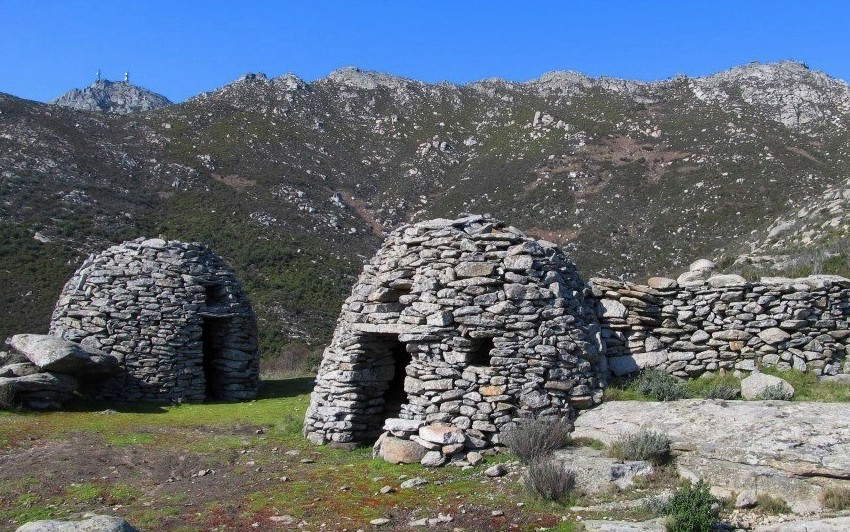
The Museum of the Napoleonic Residences is located in Portoferraio, is part of the Museums Tuscany Regional Directorate of the Ministry of Culture, and is divided into two locations: the Palazzina dei Mulini, Napoleon’s urban residence, where period furnishings, memorabilia and part of the library that the emperor of the French brought with him are preserved (here, Napoleon tried to recreate a court environment necessarily smaller but still as comfortable as the one he could enjoy in Paris, thanks in part to the presence in Portoferraio of his mother and sister), and Villa San Martino, Napoleon’s extra-urban residence. Portraits of Napoleon and his officers, as well as pictures of his battles, are preserved in the villa, making it a good place to learn more about the history of the man who wrote the history of Europe in the late 18th and early 19th centuries.
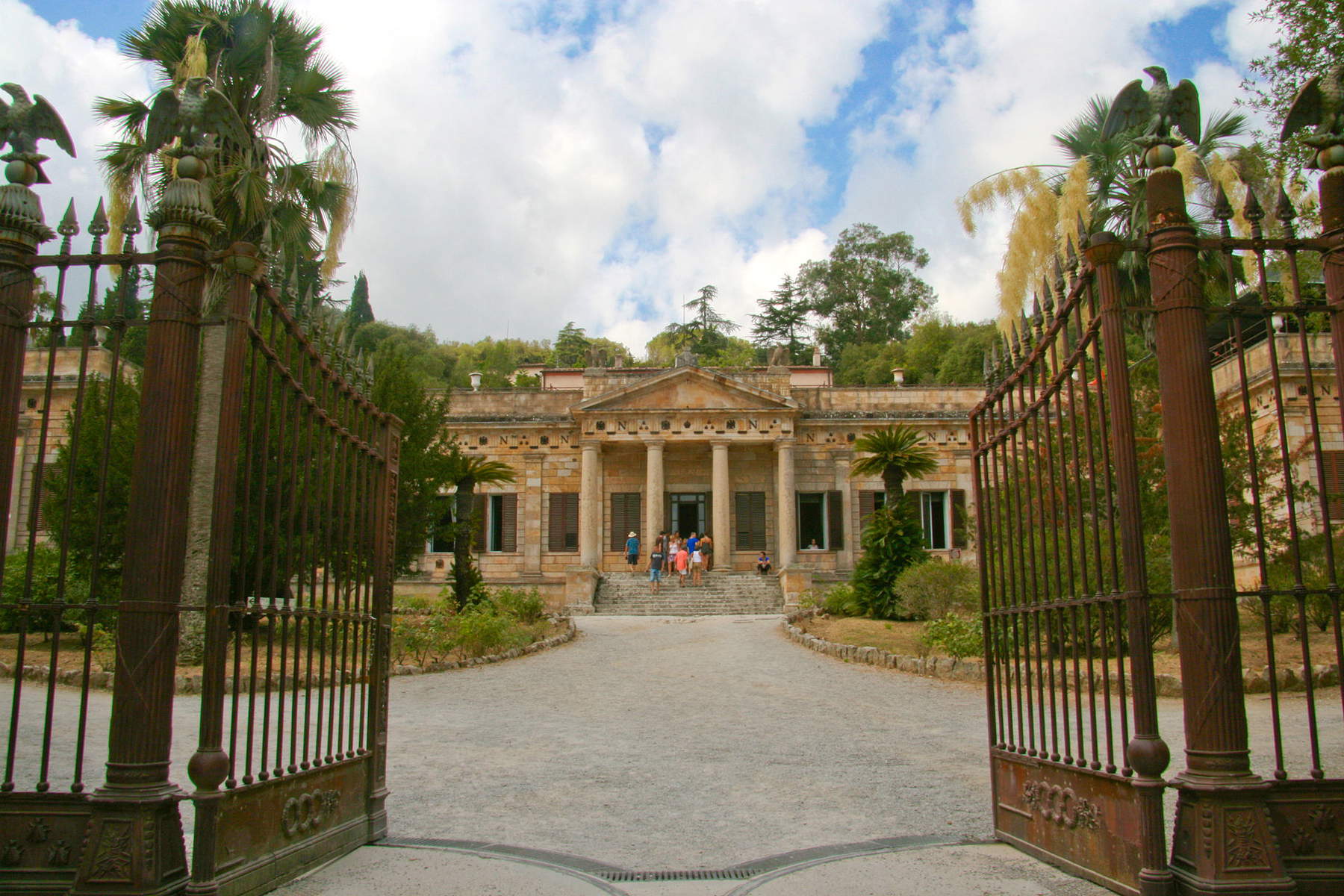
Located on the Crino delle Puntate, a mountain ridge between the center of Marciana and the village of Poggio, this is the place where tradition places the refuge of Saint Cerbone, a saint who lived in the 6th century, originally from Africa, and was much venerated on the southern coast of Tuscany (the Cathedral of Massa Marittima, the city of which he is patron, is dedicated to him). The shrine dedicated to St. Cerbone is a bare and severe building, which may have very ancient origins since, again according to tradition, it is supposed to have been built shortly after the saint’s death (he disappeared in Poggio in 575), but the first document attesting to its existence is from 1421. The sober facade leads into a single-nave interior where the 19th-century painting of the saint is located. Near the shrine is the Grotto of the Saint, the place where Saint Cerbone is said to have lived.

It is located in the municipal territory of Porto Azzurro, clinging to a rocky spur that can only be reached on foot from a path that starts from a square along the provincial road that connects Porto Azzurro to Rio Marina. It was built in the 17th century as a vow by the Spanish governor of Naples, José Pons y León, who was caught in a violent gale while sailing in the Tyrrhenian Sea and prayed to Our Lady of Monserrato, to whom he was devoted, to save him. The ship on which he was traveling managed to arrive safely at the Gulf of Porto Longone (i.e., today’s Porto Azzurro: the renaming of the town was in 1947), and thus the shrine was built, which for a long time was a popular pilgrimage destination, especially in the 18th century. Even Napoleon, in 1814, wanted to visit the shrine, which is still open for worship despite its impervious location. Inside, a marble altar houses a painting of Our Lady of Monserrato, a copy of the famous Black Madonna from the shrine of Montserrat in Catalonia.
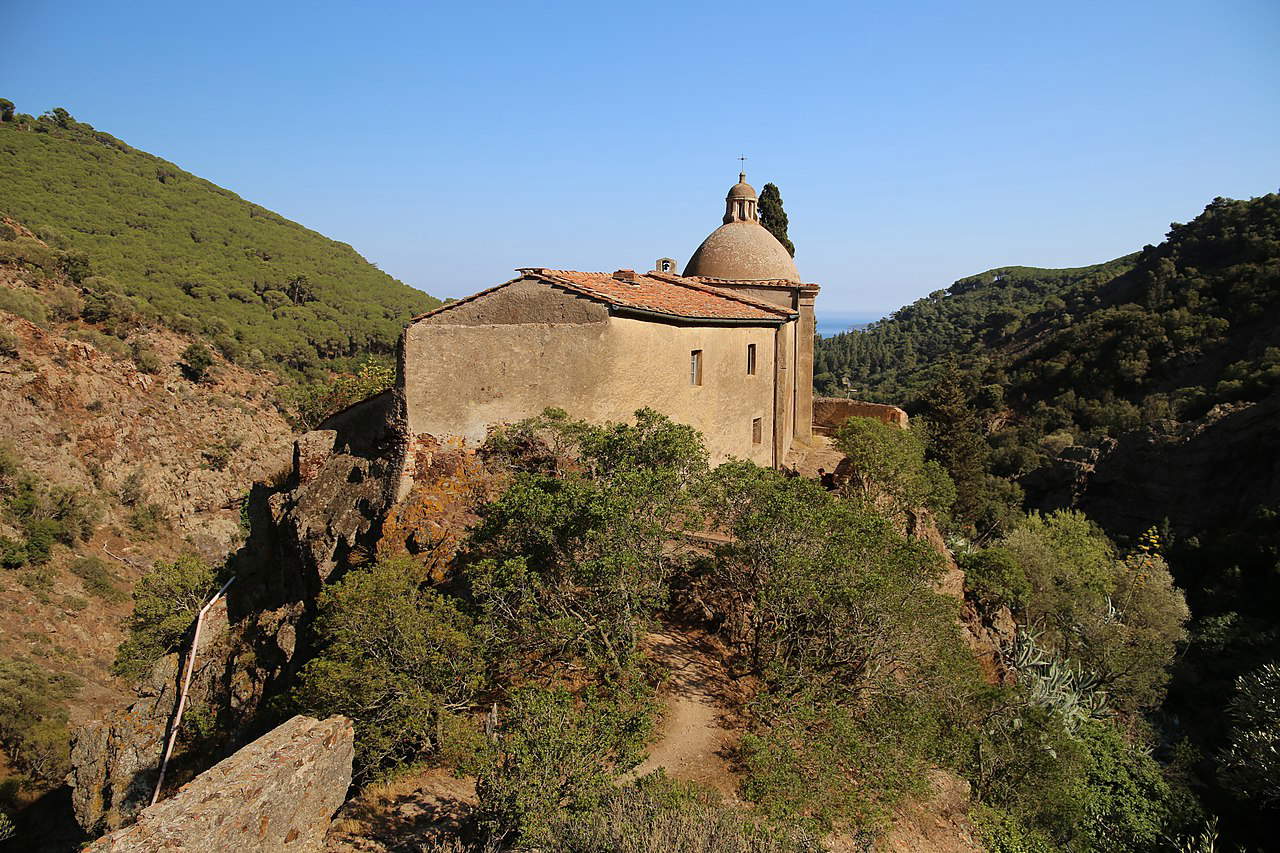
Nature lovers will be delighted to walk through the Sanctuary of the Butterflies, a nature trail located in the woods of Mount Perone, opened in May 2009. It can be reached on foot starting from the picnic area of Monte Perone, and is so called because this area of Elba Island is inhabited by many different species of butterflies (there are about fifty) that can usually be seen especially in the summer: the conspicuous presence of these magnificent insects is due to the particularly humid and pleasant environment, rich in plants and flowers that provide the butterflies with nourishment. Along the trail, several illustrative panels provide a lot of information about the life of butterflies, as well as the characteristics of the different species that can be spotted.
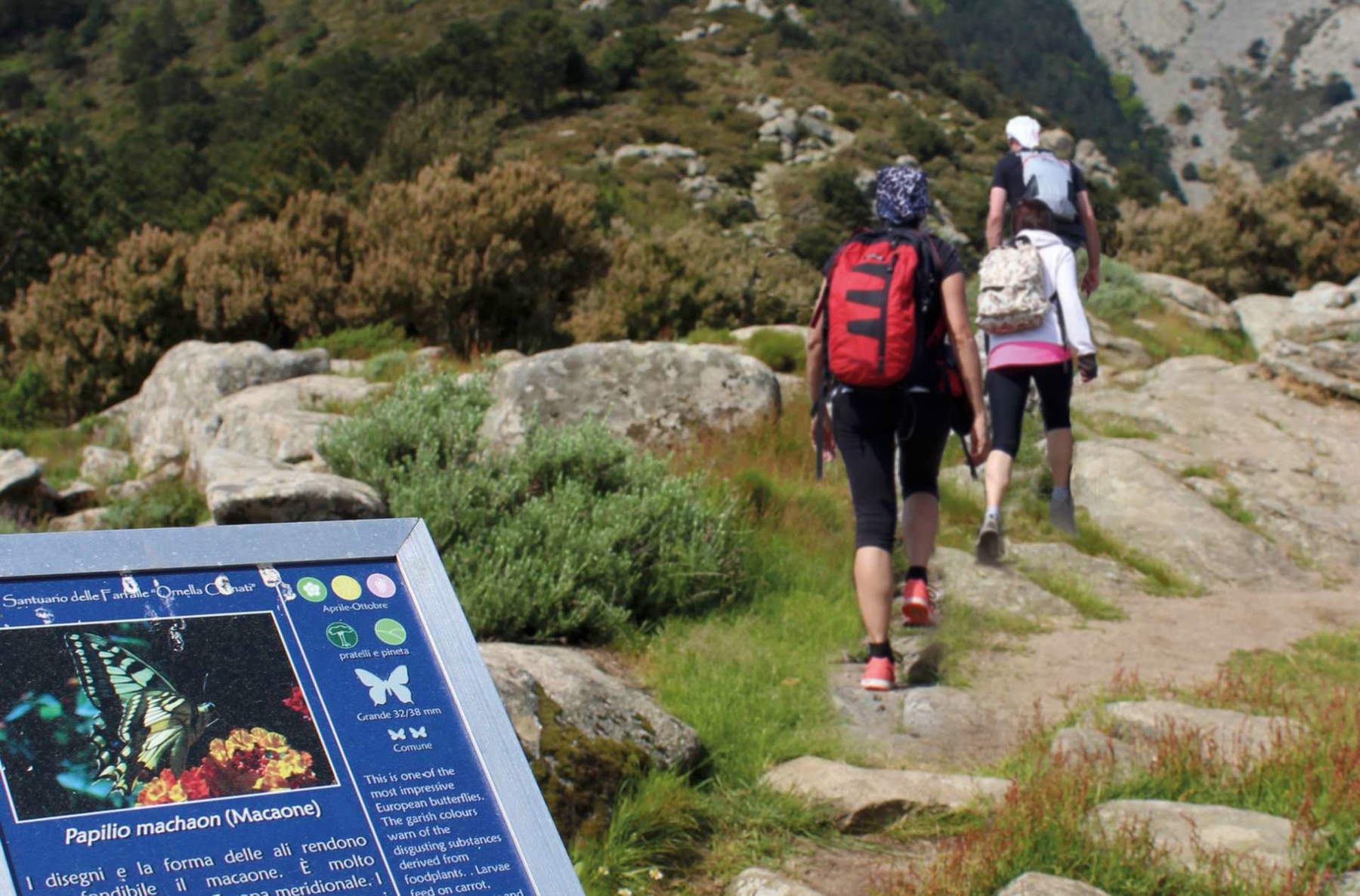
Elba Island, it is known, is famous for its beaches. Which ones are the best for enjoying a relaxing day? Probably the most famous beach is Fetovaia: a two-hundred-meter-long tongue of sand in the municipality of Campo nell’Elba, famous for its turquoise water. Similar features can be found at Lacona beach, which is instead part of the Municipality of Capoliveri: it is one of the largest beaches on the island. In Campo nell’Elba, Cavoli beach is famous, while decidedly more scenic is Cala dei Frati, located in Portoferraio under a cliff. Among the most beautiful beaches, also in Portoferraio, are that of Sansone, one of the longest and most comfortable, and that of Biodola, while among the largest and best-equipped beaches is certainly that of Procchio, in the municipality of Marciana. Those who prefer peace and quiet can opt, for example, for the Cala delle Alghe in Rio, or for the Paolina beach near Procchio, or even for the Crocetta near the center of Marciana Marina, hidden behind a cliff, and reachable by a steep path among the rocks. Finally, there is also an option for naturists: the Acquarilli beach, particular for its black pebble sand (which therefore requires adequate shelter during the hottest days of summer, due to their propensity to overheat easily), has been authorized for the practice of naturism since 2015.
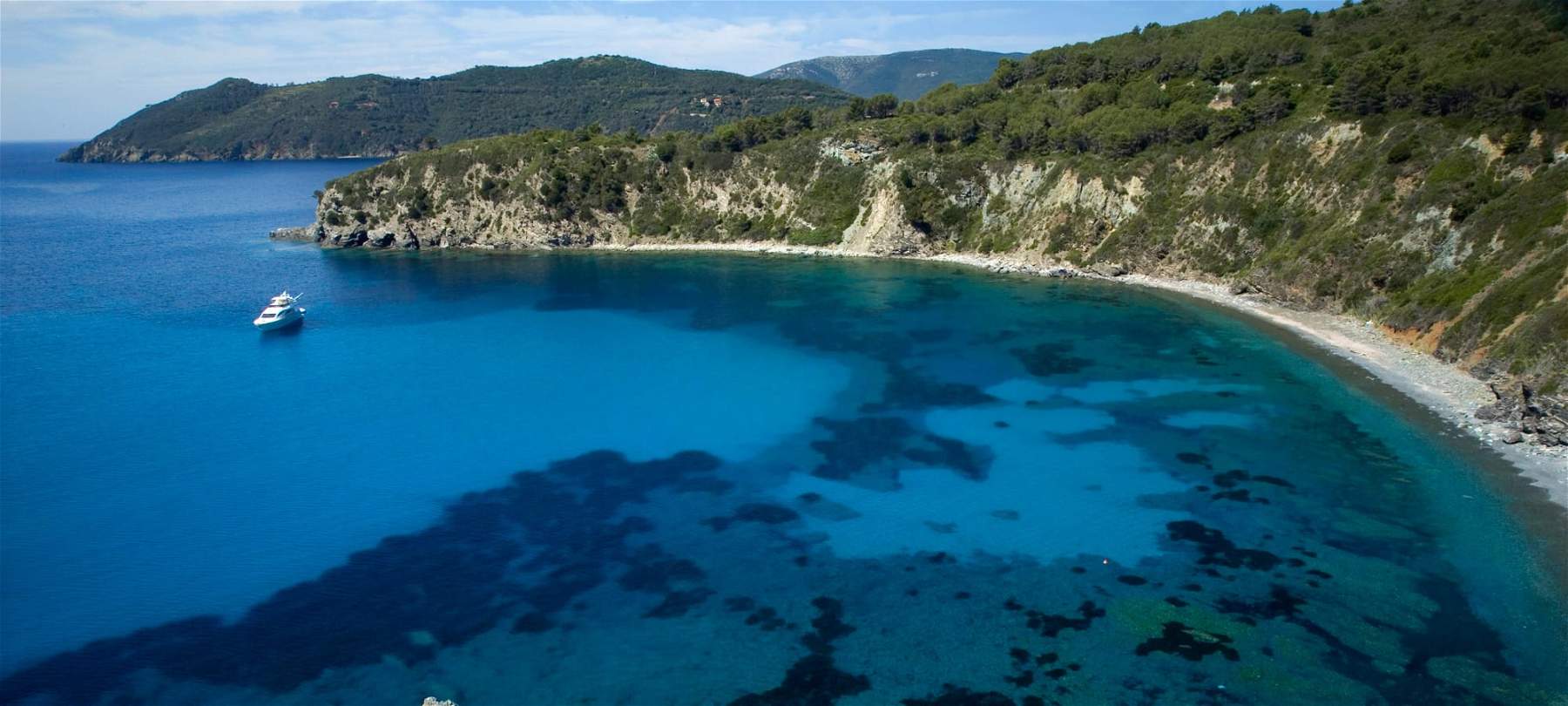
 |
| Elba Island, what to see: the 10 places not to miss |
Warning: the translation into English of the original Italian article was created using automatic tools. We undertake to review all articles, but we do not guarantee the total absence of inaccuracies in the translation due to the program. You can find the original by clicking on the ITA button. If you find any mistake,please contact us.